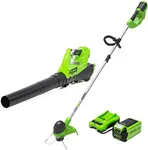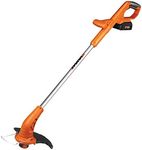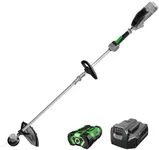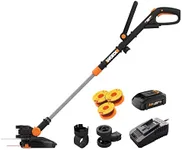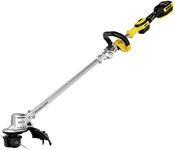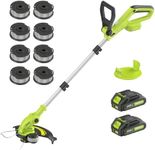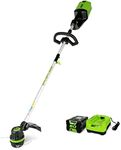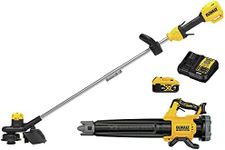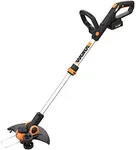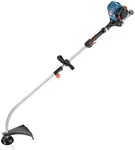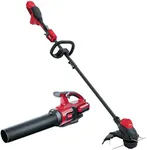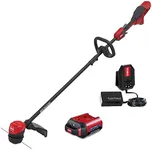Buying Guide for the Best Battery Powered Weed Wackers
Choosing the right battery-powered weed wacker can make your yard work much easier and more efficient. When selecting a weed wacker, it's important to consider several key specifications to ensure you get a model that fits your needs. Understanding these specs will help you make an informed decision and find the best tool for your gardening tasks.Battery VoltageBattery voltage indicates the power output of the weed wacker. Higher voltage generally means more power, which can be useful for tougher weeds and larger areas. Weed wackers typically range from 18V to 80V. For light trimming and small yards, a lower voltage (18V-24V) may suffice. For medium to large yards with thicker weeds, consider a mid-range voltage (36V-40V). For heavy-duty tasks and extensive areas, a higher voltage (60V-80V) is ideal. Choose based on the size of your yard and the type of vegetation you need to manage.
Battery Capacity (Ah)Battery capacity, measured in ampere-hours (Ah), determines how long the weed wacker can run on a single charge. Higher capacity batteries provide longer run times. Common capacities range from 2.0Ah to 5.0Ah or more. For small yards or quick jobs, a lower capacity (2.0Ah-2.5Ah) may be sufficient. For larger yards or longer tasks, a higher capacity (4.0Ah-5.0Ah) will be more beneficial. Consider how long you typically spend on yard work to choose the right battery capacity.
Cutting SwathThe cutting swath is the width of the area the weed wacker can cut in a single pass. Wider cutting swaths allow you to cover more ground quickly. Typical cutting swaths range from 10 inches to 16 inches. For small, precise trimming, a narrower swath (10-12 inches) is suitable. For larger areas and faster trimming, a wider swath (14-16 inches) is more efficient. Think about the size of your yard and how quickly you want to complete your trimming tasks.
WeightThe weight of the weed wacker affects how easy it is to handle and maneuver. Lighter models are easier to use for extended periods, especially for those with less physical strength. Weed wackers can weigh anywhere from 5 pounds to over 10 pounds. For light, occasional use, a lighter model (5-7 pounds) is ideal. For more frequent or heavy-duty use, a slightly heavier model (8-10 pounds) may offer better durability and power. Consider your physical ability and how long you plan to use the tool.
Adjustability and ErgonomicsAdjustability and ergonomics refer to how comfortable and customizable the weed wacker is to use. Features like adjustable handles, telescoping shafts, and ergonomic grips can make a big difference in comfort and ease of use. Look for models with these features if you plan to use the weed wacker for extended periods or if multiple people with different heights will be using it. Comfort and ease of use are important for reducing fatigue and improving overall user experience.
Line Feed SystemThe line feed system determines how the cutting line is advanced during use. There are three main types: bump feed, automatic feed, and manual feed. Bump feed requires you to tap the head on the ground to release more line, which offers control but requires more effort. Automatic feed releases line as needed without user intervention, providing convenience. Manual feed requires stopping and adjusting the line by hand, which can be time-consuming. Choose a system based on your preference for convenience and control.
